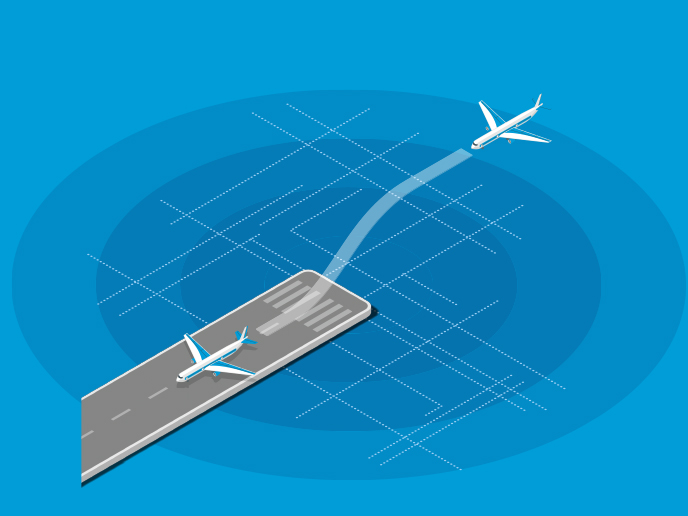Dynamic routing and aircraft configuration for greener aviation
“Fuel burn is determined more by how an aircraft is operated than the propulsion system itself.”
Fethi Abdelmoula, DYN-MARS project coordinator
“The EU’s Flightpath 2050 ambitions to reduce aircraft CO2 and noise emissions won’t be met by advances in engine technology alone – all aspects of the air transport system need to be redesigned,” says Fethi Abdelmoula, project manager of DYN-MARS. The project, hosted by the German Aerospace Center (DLR) and funded through the SESAR JU, is developing an enhanced flight management system, complemented by revamped air traffic management (ATM) methods, to increase fuel efficiency and reduce emissions and noise levels.
Inbound innovations
“Fuel burn is determined more by how an aircraft is operated than the propulsion system itself,” explains Abdelmoula. Taking advantage of advanced communication technologies, the DYN-MARS project will also improve air-ground data sharing, to optimise aircraft trajectories and speeds. This has to be achieved while maintaining high volumes of runway traffic, and without compromising safety. DYN-MARS aims to allow pilots to better plan their optimum vertical and speed profile during descent and approach, while maintaining the required runway throughput. The ability to transmit the aircraft’s computed trajectory to air traffic managers on the ground allows for further optimisation of flight paths. The project builds on previous SESAR work, in particular the flight management system developed by the DYNCAT project, which analysed mismatches in aircraft and ATM procedures and proposed technical and regulatory amendments to support improved 4D trajectories. Building on the collaborations established during the DYNCAT project, the DYN-MARS consortium includes aviation value chain representatives from six countries, all contributing unique specialisms, from avionics to environmental impact modelling.
Getting airborne
The whole DYN-MARS solution will be validated through five specific exercises, addressing each of the system’s components across a range of use cases. “We estimate around a 10 % reduction in CO2 emissions and fuel consumption per flight, during descent and approach, with noise pollution decreased by at least 1 dB(A),” adds Abdelmoula. DYN-MARS’s work could also benefit efforts to standardise the European aviation network, offering recommendations for airspace navigation, flow management and performance-based arrival and departure.
Keywords
aviation, SESAR JU, sustainability, carbon neutrality, air traffic management, ATM, Green Deal, environmental impact, Horizon Europe, Digital European Sky, emissions, reduction



